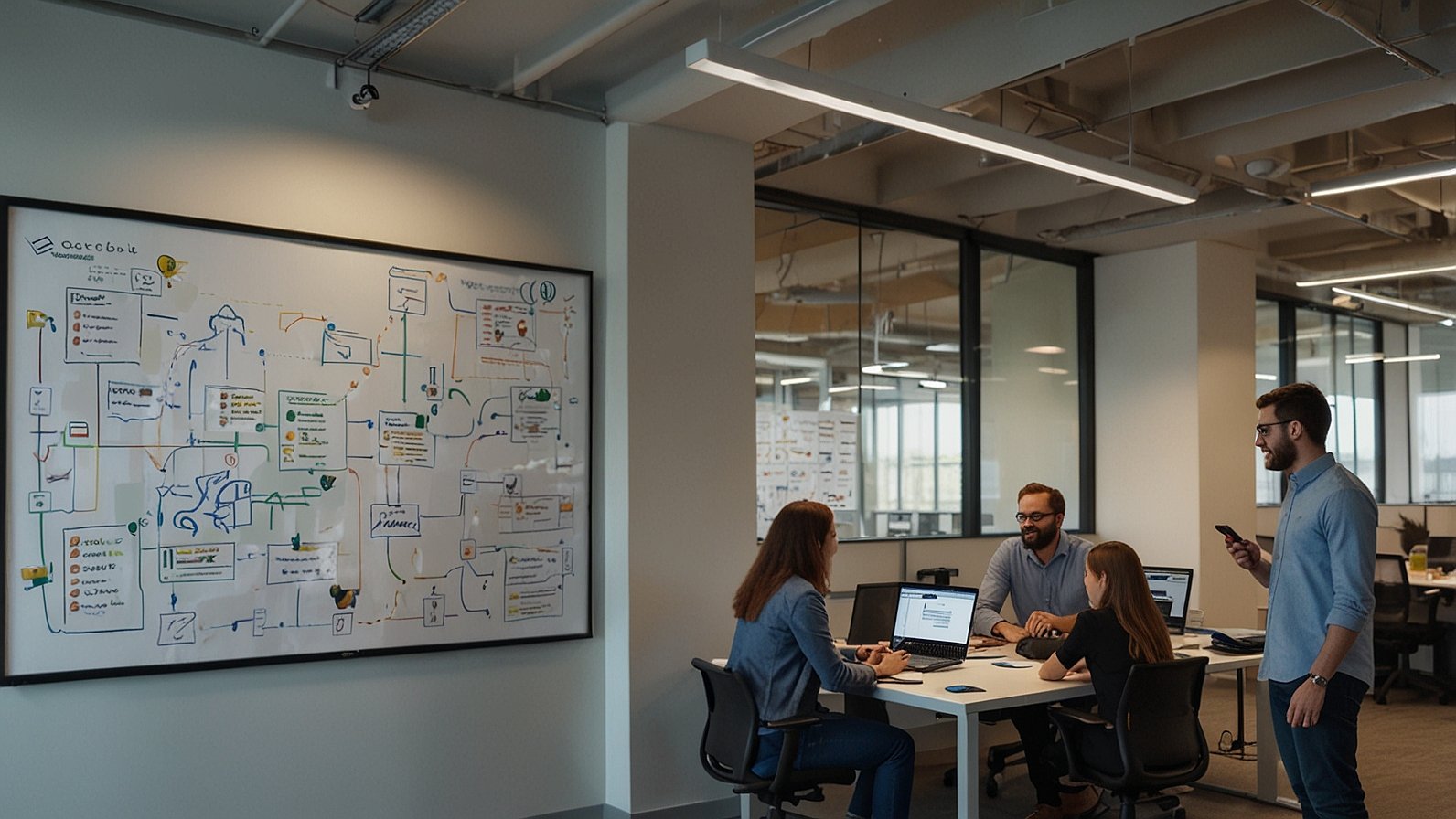Introduction
In today’s fast-paced world, where technology is at the forefront of innovation, understanding the concept of human-computer interaction (HCI) has become essential. But what exactly is HCI? At its core, HCI is a multidisciplinary field that focuses on the design and usage of computer technology, particularly the interface between humans and computers. It aims to create user-friendly interfaces that enhance the interaction experience by considering the physical, cognitive, and social aspects of users. As technology continues to advance, the importance of HCI in modern technology cannot be overstated. It plays a crucial role in ensuring that technology remains accessible, efficient, and enjoyable for everyone, from tech enthusiasts to UX/UI professionals.
Evolution of HCI
Historical Overview of HCI Development
The history of HCI is a fascinating exploration of how humans and machines have learned to communicate. Initially, computers were large, complex machines accessible only to specialists. The concept of interacting with computers in a user-friendly manner was not even on the horizon. The evolution began with the shift towards personal computing in the 1980s. The introduction of graphical user interfaces (GUIs) marked a significant milestone, making computers more accessible to everyday users. This transformation laid the groundwork for the user-centered approaches we see today.
Milestones in the Field that Shaped Current Interactions
Several key milestones have shaped the current state of HCI. From the development of the mouse and windows interface by Xerox PARC to the intuitive touch interfaces introduced by Apple, each step has brought us closer to seamless interactions. The emergence of mobile computing added another dimension, focusing on portability and intuitive gestures. These advancements have paved the way for innovations like virtual reality and augmented reality, offering new ways to interact with digital environments. Each milestone not only improved usability but also influenced how we interact with technology on a fundamental level.
Core Concepts of HCI
User-Centered Design Principles
User-centered design (UCD) is a core concept of HCI, emphasizing the importance of designing with the user’s needs at the forefront. This approach involves understanding user behaviors, goals, and pain points through research and testing. By prioritizing the user experience, designers can create interfaces that are intuitive and accessible. UCD employs techniques like personas, user journeys, and usability testing to ensure that the final product aligns with user expectations. In essence, UCD transforms complex systems into user-friendly interfaces, enhancing overall satisfaction.
Cognitive Load and Information Processing
Understanding cognitive load and information processing is crucial in HCI. Cognitive load refers to the amount of mental effort required to use a system. Reducing cognitive load means creating interfaces that are easy to understand and use, preventing user overwhelm. This involves simplifying navigation, using familiar icons, and presenting information in a digestible format. Designers consider cognitive theories to create systems that match the human brain’s natural processing capabilities, resulting in more efficient interactions and increased productivity.
Interaction Design and Usability
Interaction design focuses on creating engaging interfaces that facilitate seamless human-computer interactions. It involves designing elements like buttons, menus, and feedback mechanisms to ensure they are intuitive and responsive. Usability, a key aspect of interaction design, refers to how effectively users can achieve their goals using the system. By conducting usability testing, designers identify areas for improvement, ensuring a smooth and satisfying user experience. Effective interaction design not only enhances functionality but also creates a sense of delight for users.
The Role of UI/UX in HCI
How User Interface (UI) and User Experience (UX) Contribute to HCI
UI and UX play a pivotal role in HCI by shaping how users interact with digital systems. The user interface (UI) focuses on the visual elements, such as layout, colors, and typography, that users interact with directly. An aesthetically pleasing UI enhances user engagement and leaves a positive impression. On the other hand, user experience (UX) encompasses the overall feel of the interaction, including usability, accessibility, and satisfaction. A well-designed UX ensures that users can achieve their goals effortlessly, fostering a positive relationship with the technology.
Case Studies of Successful UI/UX Implementations
Numerous case studies highlight the impact of effective UI/UX design on HCI. Take Apple’s iOS, for example, known for its intuitive design and smooth interactions. The minimalist approach, combined with clear visual hierarchy and responsive animations, creates an enjoyable user experience. Similarly, Google’s Material Design principles focus on consistency and clarity, resulting in user-friendly applications across various platforms. These successful implementations demonstrate how thoughtful UI/UX design can enhance HCI by making technology accessible and enjoyable for users of all backgrounds.
Future Trends in HCI
Emerging Technologies Shaping the Future of HCI
The future of HCI is being shaped by cutting-edge technologies that promise to revolutionize interactions. Artificial intelligence (AI) is at the forefront, enabling systems to understand and adapt to user preferences. AI-driven chatbots and virtual assistants offer personalized experiences by learning from user interactions. Additionally, voice recognition technology is transforming how we interact with devices, allowing hands-free control. These emerging technologies are paving the way for more natural and intuitive interactions, enhancing the overall HCI landscape.
Predictions for the Next Phase of HCI Development
Looking ahead, the next phase of HCI development holds exciting possibilities. The integration of augmented reality (AR) and virtual reality (VR) is set to redefine how we interact with digital content. Imagine immersive experiences where users can manipulate objects in a virtual environment or overlay digital information onto the real world. Furthermore, the Internet of Things (IoT) is expanding HCI beyond traditional screens, enabling interactions with smart devices and environments. These advancements are poised to create a more interconnected and seamless digital ecosystem, offering unprecedented opportunities for engagement and innovation.
Impact of HCI on Everyday Life
Real-World Examples of How HCI Affects Daily Activities
HCI’s impact on everyday life is profound, transforming how we perform daily activities. Consider the rise of smart homes, where users can control lighting, temperature, and security through intuitive interfaces. Voice-activated assistants like Amazon’s Alexa and Google Assistant streamline tasks by responding to voice commands. In healthcare, HCI enables telemedicine platforms that connect patients with doctors remotely, enhancing access to healthcare services. These real-world examples illustrate how HCI enhances convenience, efficiency, and accessibility in our daily routines.
Discussion on the Social and Economic Implications of HCI Advancement
The advancement of HCI brings both social and economic implications. On a social level, HCI promotes inclusivity by designing interfaces that accommodate diverse user needs, including those with disabilities. It fosters digital literacy, empowering individuals to engage with technology confidently. Economically, HCI drives innovation and competitiveness, encouraging businesses to invest in user-friendly interfaces to attract and retain customers. However, it also poses challenges, such as potential job displacement due to automation. Balancing these implications requires a thoughtful approach to HCI development.
Best Practices for Implementing HCI
Tips for Designing and Developing User-Friendly Interfaces
Implementing effective HCI requires adhering to best practices that prioritize user experience. Start with thorough user research to understand your audience’s needs and preferences. Use prototypes and wireframes to iterate and test designs before development. Keep interfaces simple and intuitive, avoiding clutter and unnecessary elements. Ensure accessibility by following guidelines such as WCAG standards. Finally, gather user feedback and continuously refine the interface to meet evolving user expectations.
Importance of Continuous User Testing and Improvement
Continuous user testing and improvement are essential components of successful HCI implementation. Regular usability testing allows designers to identify pain points and areas for enhancement. By involving users in the testing process, designers gain valuable insights into real-world interactions. Implementing iterative improvements based on feedback ensures that the interface remains relevant and user-friendly. This ongoing cycle of testing and refinement not only enhances user satisfaction but also drives innovation in HCI design.
YOU MAY ALSO LIKE
The Ultimate Guide to PCIe+ I/O Drawers in Data Centers
Conclusion
In conclusion, human-computer interaction (HCI) is a dynamic field that plays a vital role in shaping how we interact with technology. From its evolution and core concepts to the future trends and real-world impact, HCI is at the heart of creating seamless and meaningful user experiences. By prioritizing user-centered design, reducing cognitive load, and leveraging emerging technologies, HCI empowers individuals and businesses alike. As we move forward, it’s essential to continue exploring and implementing best practices that enhance HCI, ensuring that technology remains accessible, enjoyable, and beneficial for all.
FAQs
- What is the primary goal of HCI?
Human-computer interaction aims to create user-friendly interfaces that enhance the interaction between humans and computers. It focuses on improving usability, accessibility, and overall user experience.
- How does HCI impact everyday life?
HCI impacts everyday life by making technology more accessible and efficient. Examples include smart home devices, voice-activated assistants, and telemedicine platforms that enhance convenience and connectivity.
- What role does UI/UX play in HCI?
UI/UX plays a crucial role in HCI by shaping the visual and experiential aspects of interactions. A well-designed UI enhances user engagement, while a positive UX ensures that users can achieve their goals effortlessly.
- How can businesses benefit from implementing HCI best practices?
Businesses that implement HCI best practices can enhance user satisfaction, increase customer loyalty, and drive innovation. By designing intuitive interfaces, businesses can create positive user experiences that lead to higher engagement and success.
- What are the future trends in HCI?
Future trends in HCI include the integration of AI, AR, VR, and IoT technologies. These advancements promise more natural and immersive interactions, expanding the possibilities of how we engage with digital content.











